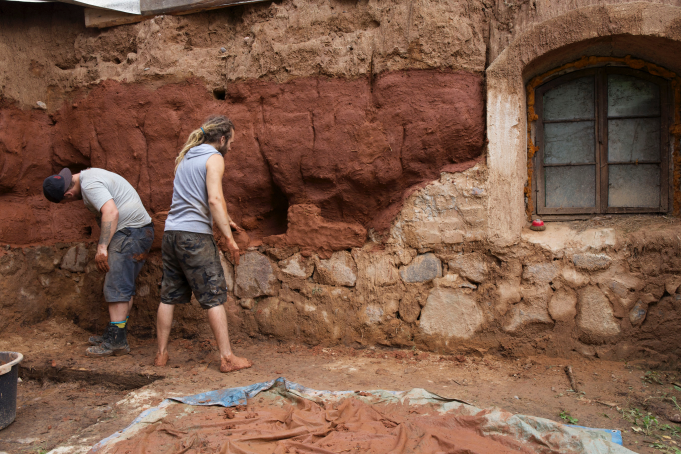Estonia has a unique clay construction heritage. Can you tell us a bit more about that?
We have large deposits of Devon age red clay and it has been used to construct much of the old buildings we see in South Estonia today. They have endured the teeth of time and most of them stand to this day.
Back in the day it was popular to have at least one earthen building per farm and these buildings were used as barns, stables, houses and even saunas. Oldest earthen buildings are 300 years and the last larger construction period was in the 1930-s.
There is a great reference from the book by Johannes Pertma which states that earthen buildings do not burn or rot and are dry and warm. In the barn built with clay the animals were in better health and their hair was shiny and the cows gave more milk.
Saviukumaja are renowned for their world-class mastery of clay
Saviukumaja is the oldest company producing natural finishing materials from clay and lime in Scandinavia and the Baltics, whose roots go back three generations.
We have several generations of experience applying clay and lime plasters. Thanks to this, we know exactly what features a high-quality finish must have. Through the last twenty years of experimentation, we have achieved great mastery in creating perfect natural finishing materials.
Straw is an ancient building material experiencing a renaissance right now. Is clay a similar story?
Actually, it is! Building with clay is a technology that is thousands of years old. The oldest adobe unfired bricks have been found to be 8000 years old. Clay has also been and is today one of the most used building materials.
It is estimated that third of the world population lives in earthen buildings.
Why did the popularity drop in the meantime? Because new and modern materials came and massive modernization became fashionable.
Sometimes people see the old construction techniques of certain countries as a poor people’s problem. Today, in Western society, there is a very strong development work also in the name of modernizing historical materials.
For example, adobe bricks, which were traditionally shaped by hand, are now precise and precisely sized decorative building blocks. Rammed earth, from which countless houses have been built, is no longer intended only for building barns, but also as a load-bearing or decorative walls in modern living.
The plaster structures have become thinner and smoother, while being strong and durable.
Thanks to modernization, many building materials have become unhealthy, containing many synthetic substances. It is increasingly being understood that synthetic materials are not healthy for humans in the long term. People’s awareness has grown all over the world, and care for the health of oneself, the planet and one’s home is growing more and more.
Why clay? What’s so special about this building material?
We use clay because it has many good properties and thus also affects the mixes that are made from it. Clay is VOC-free, allergy-free and does not pollute the environment.
Our clay plasters regulate the air humidity, keep the air humidity in the room at 40-60%, which is the best for the human body. It helps to keep the rooms cool in the summer and warm in the winter. We also use clay’s own different tones, not pigments, to tint clay plasters and paints.
Finishing materials made of clay have the lowest energy consumption in the world, so they can be called low energy products.
How does it feel to live in a clay-finished home?
The shades and colors of the clay itself are matte and soft, which creates a soft and harmonious atmosphere in the home. This is a premium quality of life. Such materials create harmony, peace and a sense of security.
Thanks to the ability of clay to regulate humidity, you will not feel stuffy or dry air. It is the most suitable for your body. It is easy for the people who come to visit to perceive.
Your products have a long journey from sitting in the earth to adorning customer’s walls. What happens in between?
We in Saviukumaja are hugely inspired by the different natural tones of clay, and thanks to that we have a large collection of different clays from around the world. This is our passion, that’s why we only use the clay’s own tones to tint clay products, we don’t use pigments.
We have made a selection of clays from which we do large-scale production. We also have them in our main product range. There are also special edition items. We are able to mix mixtures according to the customer’s wishes.
We usually buy clay powder and raw clay. We store raw clay and dry it in the air, which we grind into clay powder ourselves. In production, we mix clays with different sands according to the needs of the product.
We produce in small quantities and with high quality, controlled and precise, which is also reflected in the quality of our products.
A large part of our products are installed on the wall by top specialists in their field both in Estonia and abroad, and we ship the goods to the customer’s doorstep all over the world. Today we have customers in over 30 different countries.
What are the different types of surfaces or effects that you can achieve with your plasters?
With our products, you can make finishes with a coarse structure, but also achieve mirror-smooth surfaces. In order to create different surfaces with clay plaster, only the creative limits of the designer and craftsman remain as the main blockage.
You can express rustic cave-like surfaces or cracked earth, the structure of dried soil up to the Japanese craftsmanship where the surfaces have a mirror shine.
Does clay plaster have any disadvantages? What if it gets dirty after a few years? Can it be repainted like a normal wall?
Clay plaster has no disadvantages. The question is where to use this material.
Because the clay plaster can bind the moisture in the room, but if the humidity exceeds a certain limit, for example in wet rooms where there is constantly high humidity, then the clay plaster cannot dry out in such conditions. The disadvantage can be that it is not suitable for example in basements and damp rooms.
Clay plaster is not resistant to direct contact with water and rain. Use in shower rooms and of course on facades that are exposed to wind and rain is questionable. If, of course, the surface is not covered with protective layers such as varnish, oil or other stabilizations.
Natural clay plaster cannot be washed, so it is not suitable where it is constantly needed. It is possible to cover the surface with a protective layer. We have decorative colored finishing plasters in our product range and we have clay paints made from the same clay. Painting with clay colors is the world’s easiest way to refresh a plastered surface after 10 years if there is a need.
Straw and clay are old friends. One of the advantages of the EcoCocon wall system is that straw can be plastered over directly. What do you think about this combination?
Clay plaster can be installed directly on Ecococon straw panels.
Clay plaster is the best plaster for the interior of a house built from natural materials. Excess moisture is a great threat to natural material. A proper layer of clay plaster, however, absorbs all the moisture, keeping and protecting the straw from the air humidity.
Clay plaster is a great help for the straw walls, so that the straw remains fresh for a long time and ensures the longevity of the panels.
What makes UKU plasters special?
First is that we have selected the best clay for our base coat plaster in the region we operate.
The clay used in our base clay plaster has several times higher moisture binding capacity than the clays found in other regions. Compared to white clay, or kaolin, this indicator is several times higher. We have a strong opinion that the tone of the clay is given by the clay, not the pigments.
In our opinion, what makes a clay paint a clay paint is the natural tone of the clay itself. If you make a clay paint with white clay and add pigment and adhesives, then in our opinion it is not a clay paint but an adhesive paint with a filler, and the same applies to clay plasters.
Our products are pure (pure earth) and our slogan clearly states that this is our position, that our products are 100% pure, and we will strongly maintain this line in the future.
Thanks to long-term experience and constant testing, we have created world-class plasters and paints for even the most demanding customers.
We also have lime-based mixtures that complement the range of natural finishing materials. They are suitable for places where clay plaster cannot cope.
Our customers appreciate that we have answers to all their problems. Thanks to our competence, we can find a solution for our customers with natural finishing materials, for absolutely all substrates.
UKU clay plasters are tested to the German quality standard (DIN 18947:2013) and accordingly qualify for the highest strength class S II, and our lime plasters are tested according to the EN 998-1 standard.
What about the environmental footprint? How does clay compare to conventional finishes?
All UKU products are compostable, recyclable and do not pose a threat to the environment. We use solar energy and the energy spent on the production of materials is practically non-existent when compared to the production of finishing materials based on cement and gypsum.
We see that it helps ensure a sustainable living environment on planet Earth.
What would your message to future homeowners be?
By choosing clay plaster and natural materials you take a step closer to a better quality of life for yourself and your loved ones.
In this regard, you contribute to sustainable life on planet Earth.

